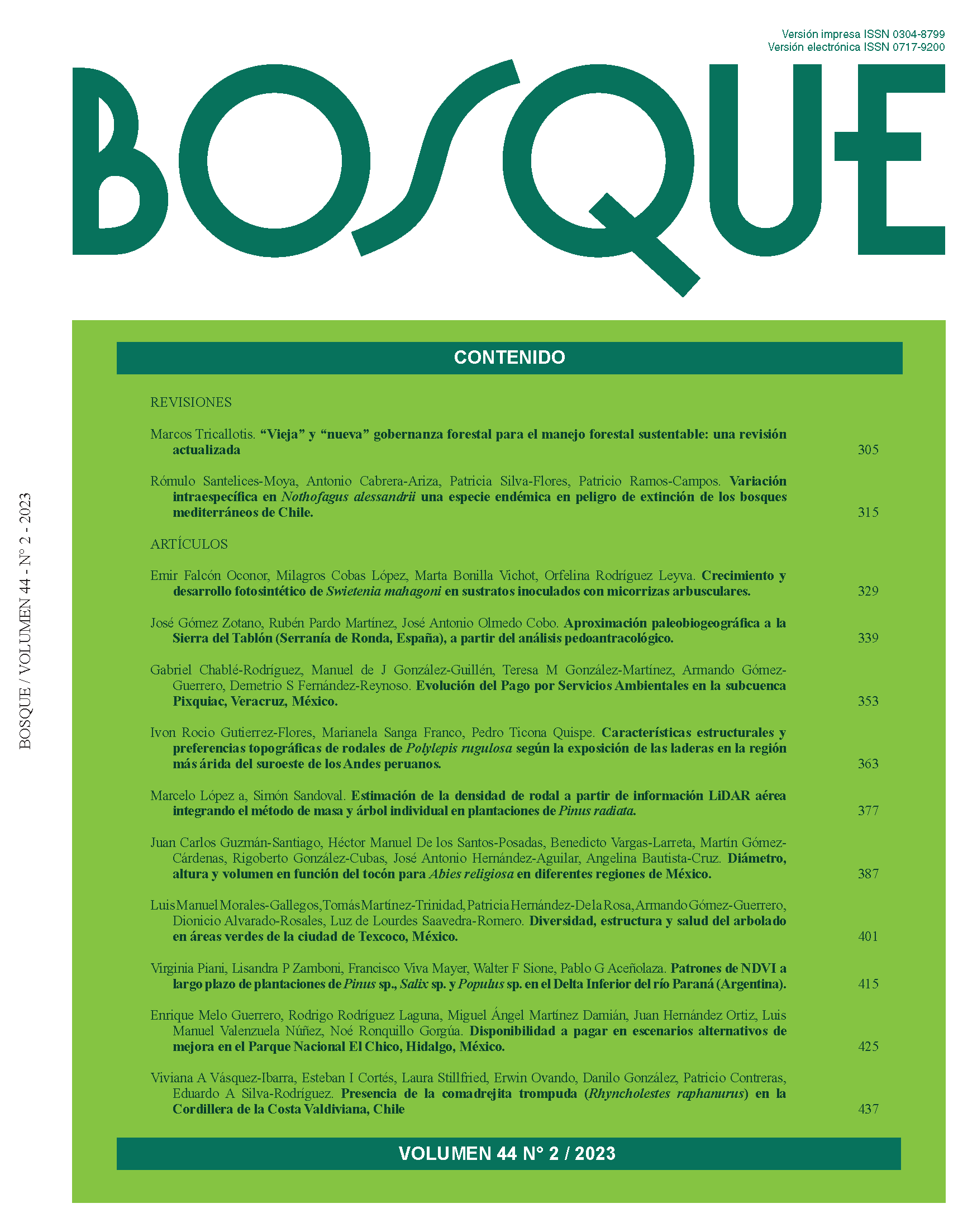Evolución del pago por servicios ambientales en la subcuenca Pixquiac, Veracruz, México
Conteúdo do artigo principal
Resumo
El pago por servicios ambientales (PSA) es una herramienta de mercado que busca compensar a los dueños por la conservación de sus terrenos forestales y aminorar la problemática del cambio de uso de la tierra en zonas boscosas importantes para la provisión de servicios ambientales (SA). Sin embargo, en su implementación, resulta fundamental verificar que este mecanismo se focalice a donde realmente se requiere. En el presente estudio se analizó la evolución del PSA en la subcuenca Pixquiac, Veracruz y evaluó el grado de coincidencia entre las áreas apoyadas y áreas prioritarias hidrológicas. Para ello, se analizó estadísticamente la información de los ejercicios fiscales del PSA en la región durante 2003 – 2016, con sistemas de información geográfica se determinaron las áreas prioritarias y áreas de PSA. Los resultados mostraron que el monto de pago ascendió a USD $1.076.782 en una superficie de 5.450 ha durante el periodo analizado. Sin embargo, solo 881,58 ha (24,5 % del total de áreas prioritarias hidrológicas) fueron consideradas en este esquema de pago. Es necesario que los tomadores de decisiones cuenten con información oportuna que permita focalizar los recursos disponibles a una escala espacial más precisa. Además, se deben conjuntar esfuerzos por parte de los actores involucrados para que exista mayor participación de los dueños de los bosques y usuarios de los SA.

